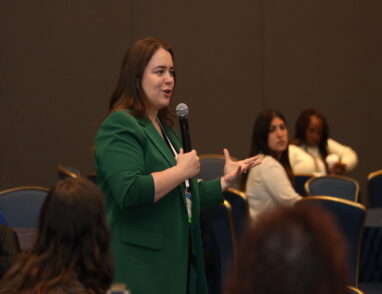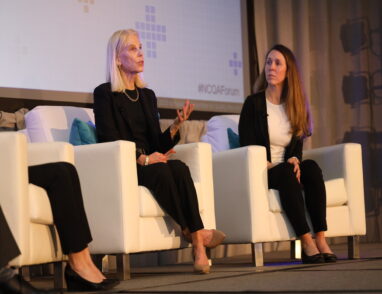Making “Birthing While Black” Safe, Equitable
September 28, 2023 · Andy Reynolds
NCQA and Reproductive Health Impact: The Collaborative for Equity and Justice are using quality measurement to make having a baby less dangerous for Black people.
Our organizations’ joint project, Birth Equity Accountability through Measurement (BEAM), will make, test and apply quality measurement strategies that orient the health care system towards birth equity.
The need is dire: As highlighted at NCQA’s Quality Talks in 2020, maternal mortality is far worse for Black, non-Hispanic people than for other groups.
Identifying Disparities
From August 2022 to February 2023, the BEAM team conducted a literature review, interviewed birth equity and maternal health measurement experts and reviewed existing maternal health measures.
The team identified five categories of disparities:
- Mental health.
- Birth outcomes.
- Cardiometabolic health.
- Health care access and services.
- Pregnancy intention and contraception.
BEAM collaborators concluded that race and ethnicity are the strongest disparity predictors.
Ways to Get Better
Many possible health care system strategies to improve birth equity exist. But there’s little evidence of which work best.
The BEAM team’s literature review focused on six methods that seem most promising:
- Training and developing the workforce to meet diverse needs.
- Establishing models of care that provide comprehensive support.
- Centering the voices of historically and currently marginalized groups.
- Implementing social needs screening and ensuring relevant follow-up.
- Improving insurance coverage and quality measurement at the state level.
- Accurately collecting patient race/ethnicity data to identify health care disparities.
Existing Measures
The team found today’s pregnancy and perinatal health quality measures are inadequate to address disparities.
Most measures look at access to care and care delivery from prenatal through postpartum care. Few measures look at screening or risk assessment across the continuum of care. None consider the appropriateness of care during and after pregnancy. Also missing: Measures of patient-reported experience and outcomes should be in national reporting programs.
The team also concluded that a few existing measures align with strategies that have been proposed or implemented to address birth equity.
What’s Next?
Read more about the project.
The BEAM team also conducted stakeholder interviews to learn what matters most to them and how the health system can best address birth equity. Stay tuned for more insights and findings!
BEAM’s work is supported by The Pritzker Children’s Initiative, The Robert Wood Johnson Foundation, The W.K. Kellogg Foundation and The California Health Care Foundation.








